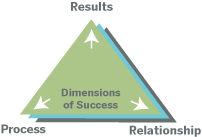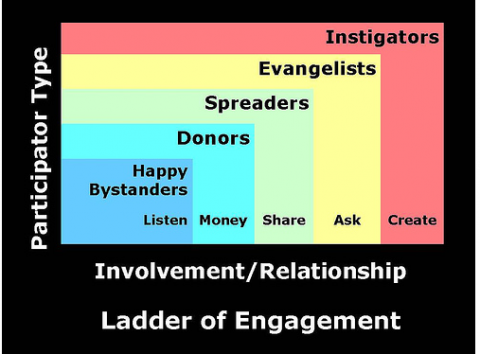The Engagement Shift
February 2, 2011 Leave a commentI’ve been working with a couple of organizations and initiatives lately as they discuss enhancing their strategies for stakeholder engagement. Throughout all of this work is the emerging awareness that we are in the midst of a paradigm shift in our field with respect to what engagement means and looks like. This, of course, has been captured by many writers and thinkers who have been looking closely at what social media is enabling (see, for example, Clay Shirky’s work, the Working Wikkily blog, or the writings of Beth Kanter and Allison Fine). And at the same time there is a realization that this is not just about technology, but a return to some of what we’ve forgotten as well as a step towards something new.
Social media have helped us to remember that we have created many walls and formalities that are not primordial or appropriate. We have chosen to put boundaries between functions within organizations, between organizations, and between our personal and professional lives. There may have been good historical reasons for this, but we have all undoubtedly experienced how these structures can be overly inhibiting and keep us focused on our individual rafts at the expense of reaching the distant shores. Furthermore, social media are reminding us that sometimes informality is the best policy. In a recent post on the HBR website, John Hagel III and John Seeley Brown offer up some tips for better social networking including (and I paraphrase): be willing to be vulnerable, be yourself, say nice things about others. This isn’t about how to get more followers on Twitter, it’s about leading with transparency and cultivating trust. Why? Because we need each other and more of each other, because no one of us, no single organization, can do the work that needs to be done alone. Because we are all in this together.
Understanding this, perhaps under the glaring light of the economic recession and other significant challenges that will just not go away, more organizations are wanting to figure out how to connect with and enlist others in doing the work. And this does not simply mean cultivating donors or recruiting volunteers for existing projects. It is also about “giving the work back” to others, in good adaptive leadership style. Or in network lexicon, it’s about pushing things out to the periphery” and supporting self-organizing capacity. This means trusting people to act on their good intentions that are in alignment with the changes we are looking to make in the world. In this sense, we do not pursue engagement “so that” we achieve overly determined ends, but in the spirit of supporting co-creators (or “instigators”) who can help our work become more than what we imagined.

In one of the key frameworks for our practice at IISC, we highlight the importance of balancing multiple dimensions of success, paying attention to results (goal or task accomplished), process (how work is set up and carried out), and relationships (between people and how people relate to the work). From an old paradigm lens, engagement looks at process and relationships as being wholly in service of results. What this risks is making people feel like means to an end and undertapping both their potential and what we could do together. The real engagement shift is about seeing and treating people more holistically and using new and old tools that develop collective intelligence and capacities to realize shared and deeply held aspirations.

No Comments